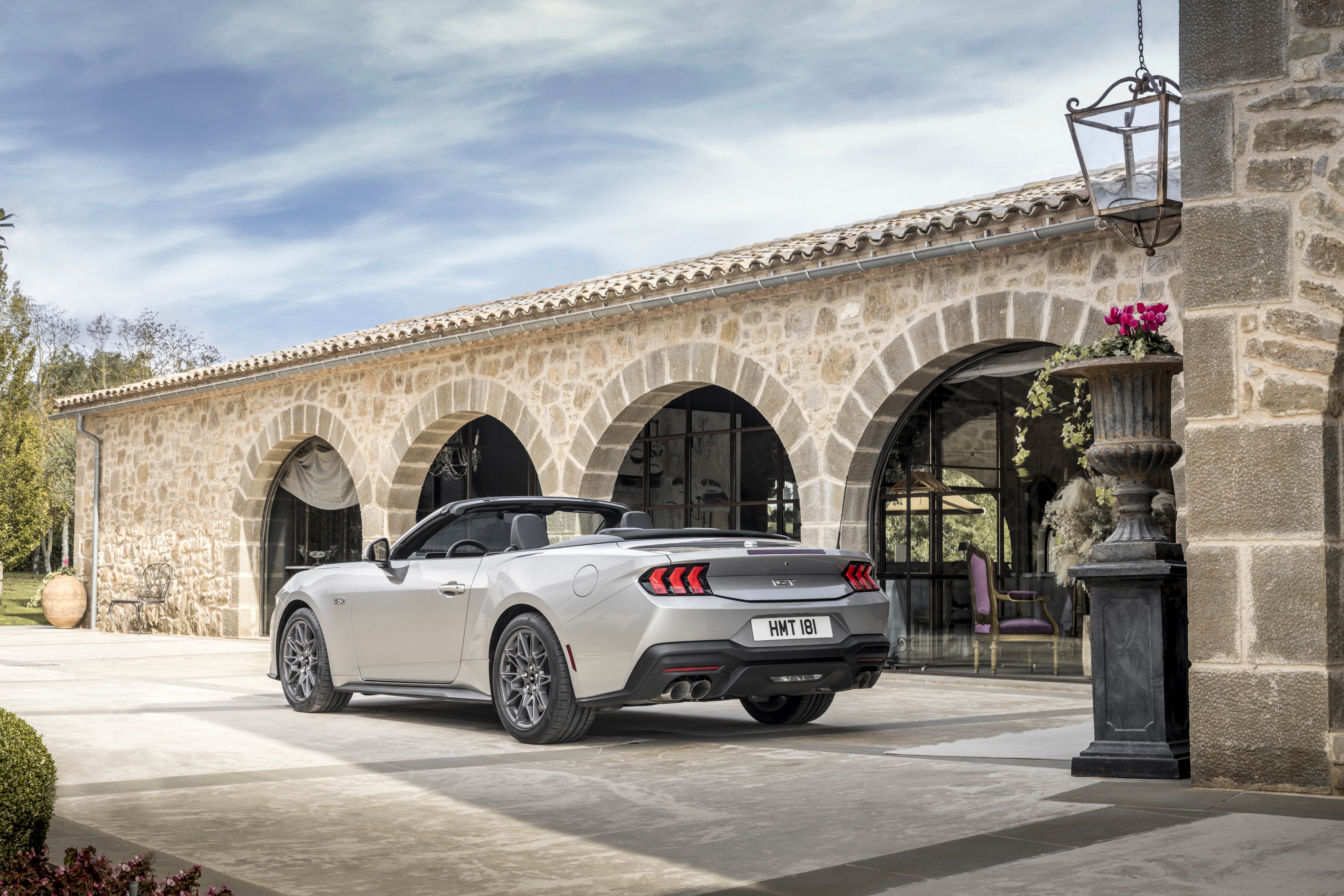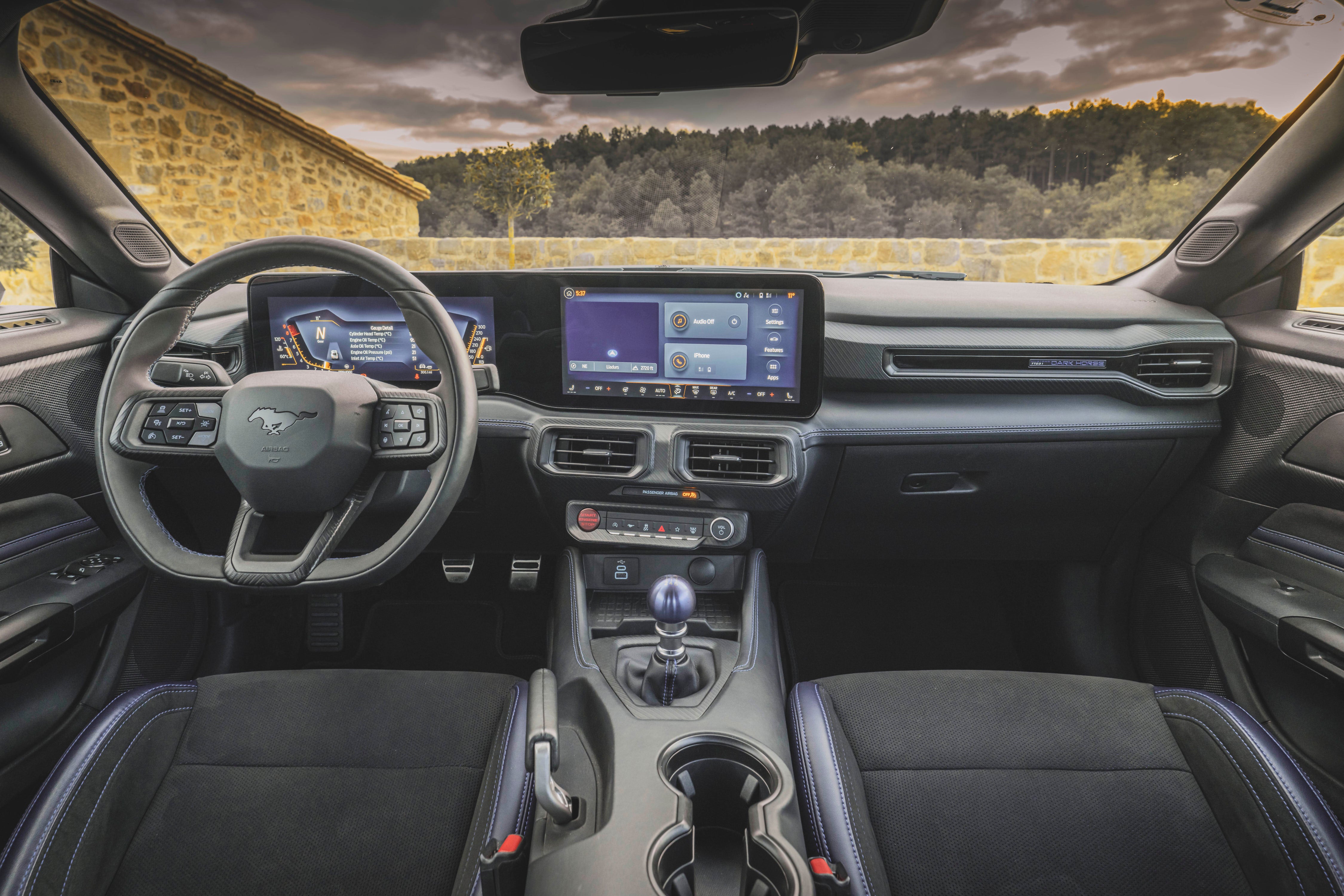Before it goes to the great automotive knacker’s yard, I thought I’d drive a Ford Mustang GT, the “proper” one with the five-litre V8 motor rumbling away. I don’t mean to alarm anyone. The Mustang, with its very American base, may well be around for a lot longer, depending on politics and whether the US can hold a free and fair national election again. But on this side of the ocean, it is surely doomed. Indeed, the old pony, now in its seventh iteration, is being flogged on all sides. It’s obviously unacceptable in the current climate (pun intended) to be hoofing around in something that returns 24.6 miles per gallon (in my mixed driving), and, more to the point, pumps out a frankly appalling 280g of carbon dioxide for every kilometre of highway it charges down.
In due course, in most of Europe, electrification and legislation will euthanise the Mustang. In the case of my test car, the convertible, things are even more bleak. You may have noticed that sales of soft tops in the UK have plummeted; almost 100,000 registered in 2004, against about 12,000 now. There’s far less choice available now as well. The old coupe-convertibles, such as the Peugeot 208 CC are long gone, and the volumes are usually too small to make sense in today’s hyper-competitive market. People don’t have as much disposable income these days as well.

The perverse old rationale for going topless in the UK was that the very fact that hot sunshine was so rare that the British had to make the most of it and take any opportunity to top up a tan. So we bought more convertibles, per head, than anyone else in Europe. Global warming and our now routine heatwaves mean that we have more UV rays than we really want.
The Mustang is a glorious survivor and outlier in almost every way. It’s a four-seat (well, 2+2) V8 convertible, actually made in the US (Flat Rock, Michigan) and thus unique on the British market. You might even call this car a unicorn. (Its nearest rival, the Chevrolet Camaro quietly slipped away some years ago).
Anyway, that’s enough gloom. I loved the Mustang, which makes it a very guilty pleasure. But pleasure it is. It’s about £60,000 now, still, miraculously, available with right-hand drive, and it’s a fine drive. “GT” means grand touring, and that’s what it is best at, and it turns any journey into something you’d look forward to. Any excuse to take it out, basically.
In one sense, it’s pretty poor value. You basically get a big, powerful V8 engine, some fine flowing bodywork highly redolent of the celebrated 1964 original, four seats, four wheels and a touchscreen that looks like it’s been bolted into the dash. Which it has. For its size, as is traditional, the Ford V8 doesn’t generate that much horsepower (pun not intended) when pitted against, say, the equivalent unit fitted to a BMW M5, a much more lively beast. And it lacks the technical sophistication let alone reliability you’d find in a Lexus LC (which has just gone off sale).
The Bentley Continental GT convertible has more luxury and more ability, but it costs three times as much. The Mustang is not that up to date, either. This, the Mark 7 Mustang, is basically a revision of the model that first appeared in 2014, but the new front and other detailed cosmetic changes have freshened it up nicely – Brembo brakes and 19-inch wheels suit it well. The dash and controls remain reassuringly random.
Yet this is a car you want to possess in an uncommon fashion. It’s the most handsome thing on the road, and the burbling noise lends it a symphonic quality, and you don’t really care that it’s not as fast as a Porsche or some Lamborghini because it’s quick enough and more fun and far more comfortable – long journeys become the point of Mustang ownership, turning a commute into a pleasure. You can tailor its ride and performance to your mood, put it in tyre-shredding launch or drift modes, and Ford will even do you a manual gear change. Rear-wheel drive only, mind, and no turbo.

Not a sophisticated workhorse, then, but maybe easier to keep going as the years gallop by. Indeed you will probably have to because I doubt they’ll be selling these in the UK for that much longer. Unless, that is, President JD Vance, as he may be in a few years, insists that it would be much better all round if the British just did as they were told, and bought more American stuff, tariff-free.



